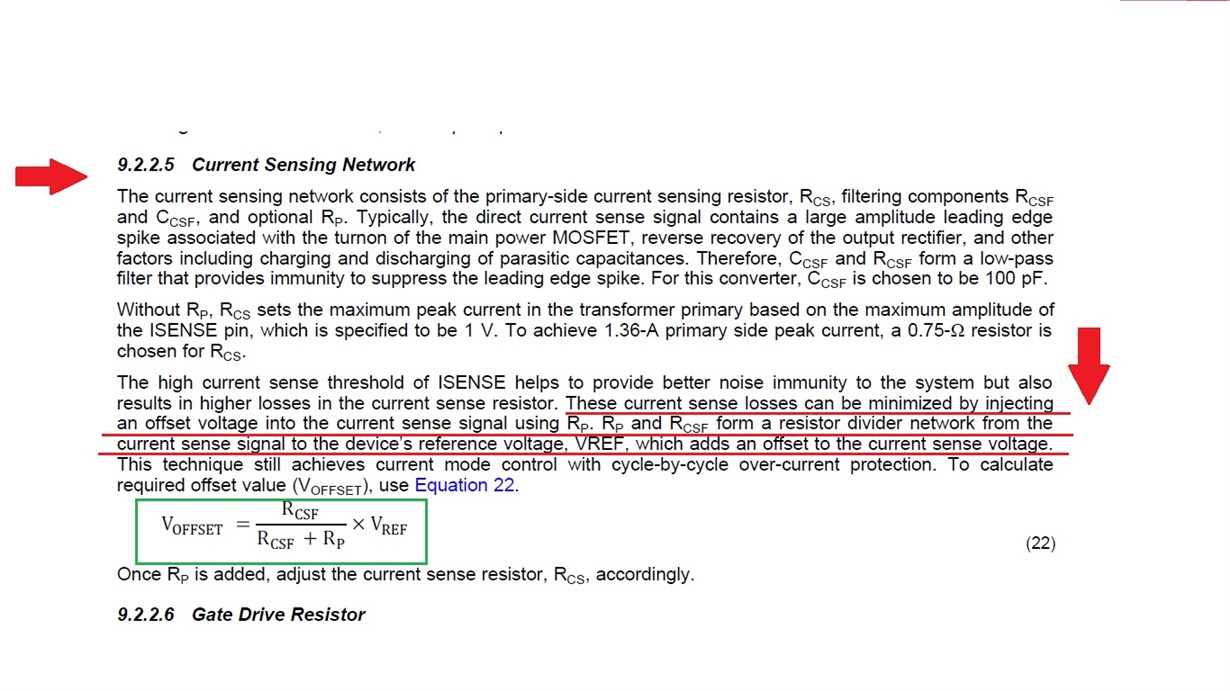Hi;
I am making Constant voltage 5VDC flyback based power supply using UC3845. I have read TI datasheet .
As per page number-25 Current sensing network design Equation number : 22.
Generally we can calculate Rcs value from maximum peak primary current, as we know when drop across Rcs higher than 1V it terminate the gate output voltage.
But according to datasheet we can reduce current sens losses by injecting extra voltage to Isens pin using Vref and voltage divider network.
I cant understand how it work? How
VOFFSET = (RCSF × VREF) / (RCSF + RP) use and then how find Rcs value from it?
Sometimes in many design I have seen that one transistor connected with Vref pin and base pin connected with Ct (RT-CT network) . Really it is difficult to understand.
Can you please provide simplification ? with detail example and explanation ?
Attached one file : in this case Ipk = 414 mA . (This simmulator design from TI web- bench online)
bench online)
Looking for your support
Thanks :
Jaydeep Shah
radhey04ec@gmail.com



